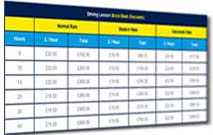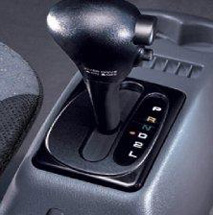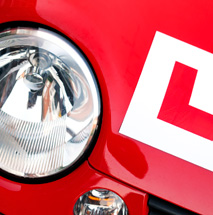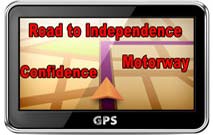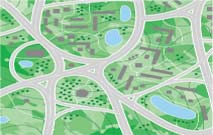Have you ever felt nervous or scared of motorways? Not driven in a while and need a confidence booster?
Motorways are designed to help you get to your destination as quickly and safely as possible. However, speed comes with a price attached. Long journeys on motorways can zap your concentration which in turn may lead to problems. Motorways are probably our safest roads but when accidents happen they are usually quite sever due to the high speeds involved. Motorway accidents often involve loss of life but this risk can be greatly minimised by following the advice given below.
It is common sense to have a vehicle that is fit for the road; however this becomes more important when you are contemplating a motorway journey. Driving at higher speeds over long distances is sure to test the weakest components of your vehicle. In the same way that your vehicle needs to be in good condition you also need to be fit and alert. The higher speeds on motorways mean that things can happen very quickly. A moments lapse of concentration could have severe consequences.
So what can you do to reduce the risk?
- Plan your journey
- Make sure that you are fit to drive
- Rest well so that you can stay fresh
- Make sure that your seat is adjusted to a comfortable position
- Keep the vehicle well ventilated
- Do not drive after having consumed any alcohol
- Remember illness, stress or depression can affect your driving
- Work out where you can take a break at a motorway service station
- Take a break every two hours or less, never drive beyond three hours at a stretch
- Load all luggage and make sure articles are secure so that they do not fall or move around whilst driving
JOINING THE MOTORWAY
As you approach from the slip road you must give way to traffic on the motorway, adjust your speed so you can join the left hand lane of the motorway in a safe gap at a speed appropriate to the traffic in that lane.
ON THE MOTORWAY
Due to the high speeds check your speedometer regularly. Also you will need to look further ahead and use your mirrors earlier than on other roads.
SPEED AND STOPPING DISTANCE
Observe the speed limits in the Highway Code and keep a safe distance from the vehicle in front of you. Remember that the stopping distances can vary depending on the condition of the road i.e. dry, wet and icy.
ROAD CONDITIONS
Information is available from travel bulletins on local and national radio, TV and the web.
LANE DISCIPLINE
Keep left unless overtaking. Use your mirrors and insure that the lane you wish to enter is clear ahead and behind. Signal your intention in good time and be sure that it is safe before manoeuvre. The only time that you may overtake on the left is if the traffic is moving in queues and the queue on the right is moving slower than you. You must not use the hard shoulder as a lane.
LEAVING THE MOTORWAY
- Remember your motorway exit number so that you are in the left lane in good time
- Use the count down markers
- Reduce your speed and signal left well before entering the slip road
- Look for signs which may indicate sharp bends on the slip road
- You will need to adapt to a slower non motorway speed
COMMON ERRORS
- Driving too close
- Not signalling early enough
- Driving too fast for the road conditions
- Continuing to use the middle or outer lane when an inner lane is clear
- Driving when tired

